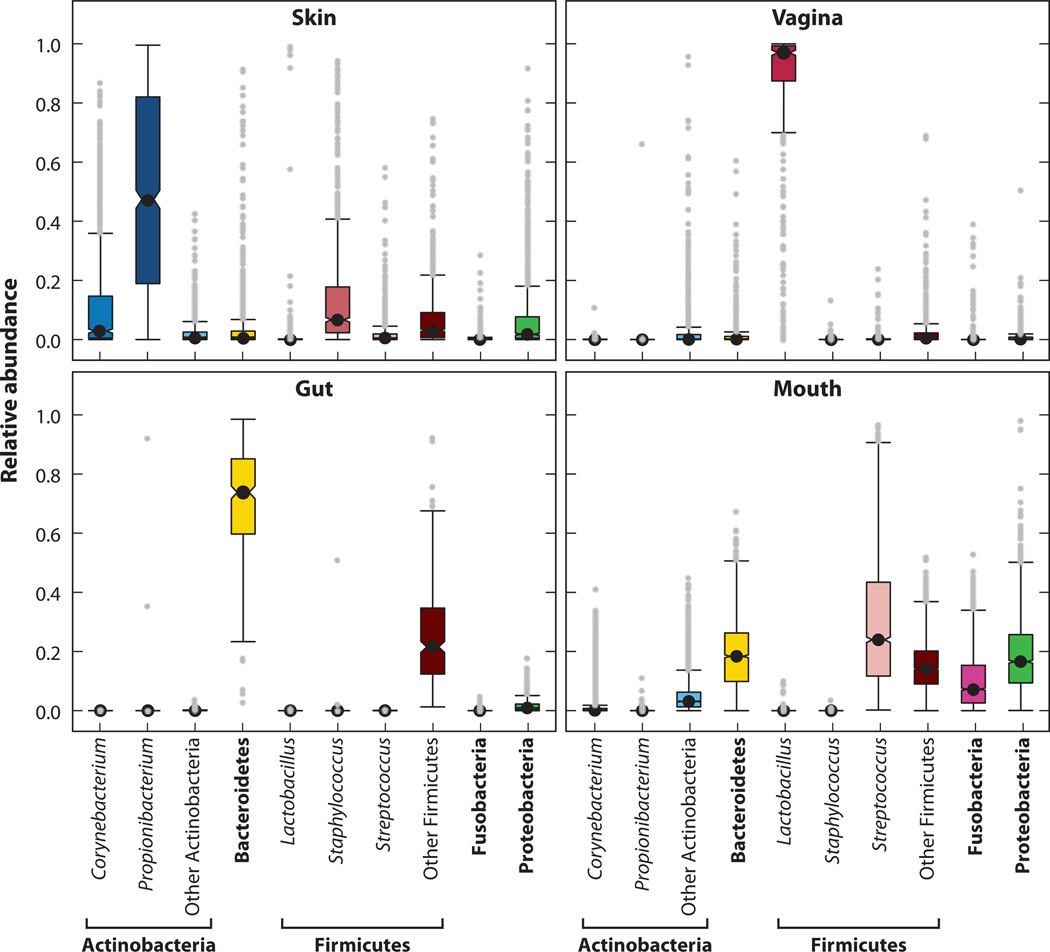Figure 3.
Interpersonal variation in levels of bacteria (classified at the genus and phylum levels) of the skin, vagina, gut, and mouth. The median relative abundance of each bacteria is indicated by a central point, the boxes extend from the first to third quartiles, and the whiskers extend to the highest and lowest data points no farther than 1.5 times the interquartile range from the box. Gray dots represent individual samples that lie outside this range. Each body habitat harbors dominant signature taxa. Actintobacteria (Corynebacterium and Propionibacterium), Firmicutes (Staphylococcus, Streptococcus, and others), and Proteobacteria predominate on the skin, with interindividual variation displayed; Lactobacillus predominates in the vagina; Bacteriodetes and Firmicutes predominate in the gut; and Bacteriodetes, Firmicutes (Streptococcus), Fusobacteria, and Proteobacteria predominate in the mouth. Data derived from the NIH Human Microbiome Project study (http://commonfund.nih.gov/hmp).

